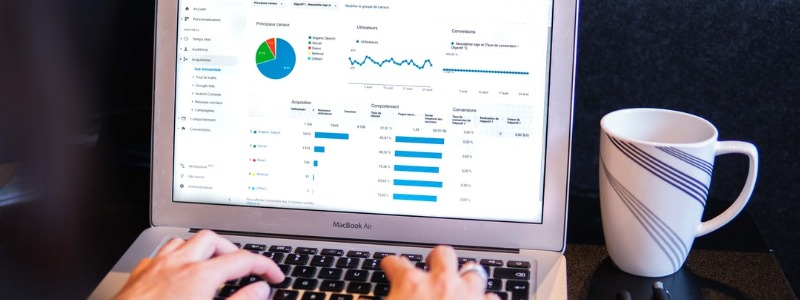How to Use Google Trends to Find Popular Searches
Contents
Google Trends, an often under-rated product developed by Google, is finally receiving the attention it duly deserves. Since its inception in 2006, it has provided an in-depth analysis on the popular search terms, indexed systematically according to the time period and geographical location. This has a significant implication particularly in the business and marketing world. Marketing executive no longer have to rely on their ‘gut’ feeling to get their marketing strategies right. With the tons of data available at their disposal, economic decisions can now be undertaken with a greater degree of certainty and favorability of outcome.
In recent years, Google Trends has been used increasingly to supplement economic forecasting tools. This particular trend greatly triggered my curiosity. Could a correlation possibly exist between the search patterns of users and the outlook of the economy? How effective is the data from Google Trends in accurately predicting business cycles? I decided to satisfy these inquisitions by undertaking some general research on Google Trends.
From the onset, the slick user interface and ease of usability offered by Google Trends was particularly notable. Additionally, the presentation of data in aesthetically appealing graphs and the ability to focus on the search patterns in specific geographical locations were forthcoming in the comparative analysis between similar search terms. These attributes provide the perfect avenue for a non-technical individual like me to investigate and take advantage of the popular search trends across the globe.
Reading data from Google Trends
The Google search engine accounts for 90 percent of all search queries undertaken globally. As such, an analysis of the search queries on Google Search provides accurate information and estimates related to trending global events, products and entities. The required Google Trends data is plotted as a graph with the horizontal line representing the timeline (beginning in 2004 when Google started collecting search related data). The vertical parameter is representative of an index of the number of searches for a term relative to the average number of searches undertaken. In simplified terms, a value of 4 on the vertical parameter indicates that the search for a particular term was undertaken 4 times as much during a given time period.
Using Google Trends Data to make consumption choices
Let’s suppose I am interested in purchasing a smart phone. The 3 options available to me are – Apple’s Iphone, RIM’s Blackberry and Google’s Android devices. An analysis of the popular search terms using Google Trends would provide me with a rough gauge on the relative popularity of a specific smart phone at a current point in time. With Google’s Android accounting for 74% of all smart phone sales globally, it comes as no surprise that the search queries related to the Android are relatively higher compared to the Iphone or the Blackberry. Furthermore, a graph from provides a good estimate on the changing face of consumerism and customer preferences in the smart phone market. The smart phone users also gain a better insight into the consumption trends in their geographical location. Similarly, Google Trends data can be used to gain further insights into state of a country’s economy depending on its population’s consumption patterns of cars, clothing and other accessories.
Taking Advantage of Google Trends
Without Google Trends, I would have probably ended up purchasing the Blackberry, instead of the Android devices. An investigation into the historical search trends related to Blackberry provided me with an accurate insight into the plight of Research in Motion (RIM), the makers of Blackberry. After experiencing a rapid surge in sales and profitability from the Q3 of 2007 to Q4 of 2010, RIM was knocked off the perch by Android. The reduction in Blackberry related searches had coincided with the reversal in the company’s fortunes. As such, a correlation between the number of Google searches and the economic outlook of a company is prevalent.
Similarly, in the financial markets, a link has been established between the Google Trends data of a company and the popularity in trade of the corresponding stocks, albeit this correlation is valid only for a trading week. With Google placing markers next to major news events about the search query, the rapid surges or declines in specific stocks can be tracked.
The need to understand global trends has gained in popularity and importance in recent years. With human civilization expanding its horizon in almost every aspect, keeping track of the latest developments has become a necessity owing to the competitive nature of the world we live in. This is made feasible through the utilization of Google Trends. In face of the increasingly competitive global financial markets, information on market trends and customer preferences can be the difference between boom and bust.
The Keyword Research Tool, a more technical analytics tool can be used in conjunction with Google Trends to develop advertising and marketing strategies that are targeted at specific sections of the population. This is especially handy when one is stuck on the use of the appropriate keyword when it comes to marketing a product or an idea relative to the target audience.
Google Trends easy to use interface has been a hit across the different strata of the professional industry. With so much data in store for academics, journalists and people like me who are curious about the behavior of people, the complete analysis of all the provided data often becomes unfathomable. However, with newer updates such as Google Hot Trends and the Zeitgeist, individuals are provided with a condensed version of the popular search results for varying time horizons.
The services delivered by Google Trends has a multitude of implications and is often used to predict economic and consumption activities. As such, it is an integral tool in understanding human behavior and preferences. However, its versatility and significance is still undermined. But it is garnering the attention of an increasing number of professionals, who are using it to their economic, social and political advantage.


